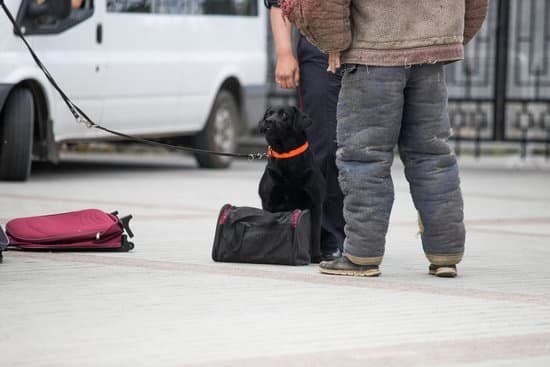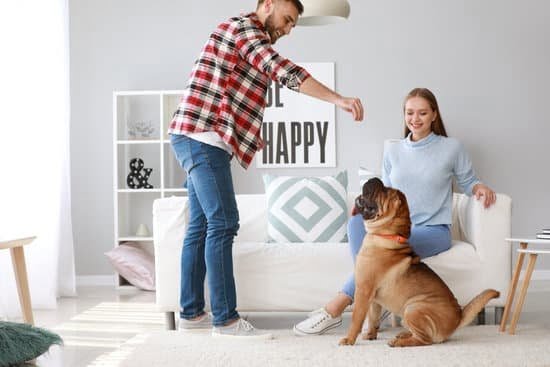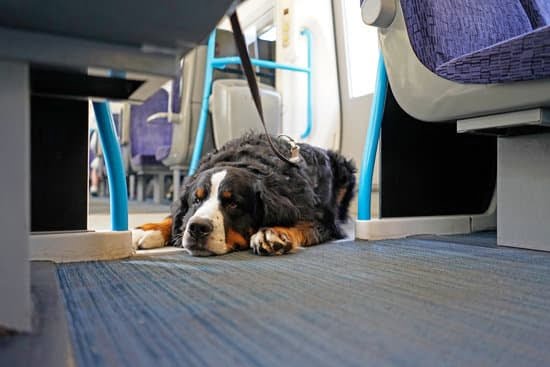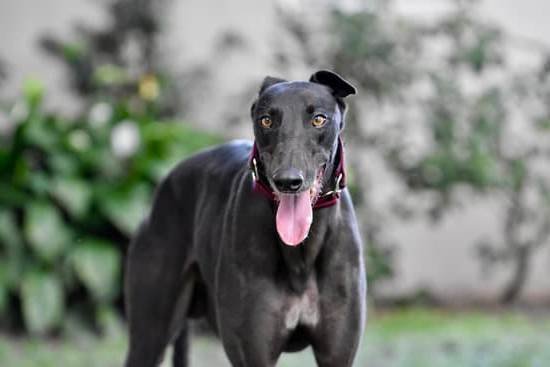Introduction
Before you can begin to train your dog to sit, stay, and heel, it’s important to have a basic understanding of how dogs learn. Dogs are intelligent but need positive reinforcement in order to progress through their training. When they do something you want them to do, reward them with a treat or words of praise. This will help reinforce the behavior and strengthen your bond with each other. Additionally, consistency is key when training your pet. Every time you ask him to obey a command, provide rewards or reinforcement until he understands that this is what you want him to do.
Once you understand how dogs learn, you’re ready to begin teaching commands like “sit,” “stay,” and “heel.” Start by having treats handy for rewards as well as a leash for walking at heel. To teach “sit” tell your dog “sit” and show him the treat in your hand while slowly moving it over his head from back-to-front. As soon as his bottom touches the ground give him the treat and praise him for obeying correctly. Repeat this process several times until your dog can sit on command without being prompted with the reward every time.
Training your pup to stay requires guidance and patience from you. Give your dog the “stay” command while stopping yourself just outside of his reach before giving a treat if he remains in position throughout the entire period of time asked of him. As he progresses through his training, gradually increase the length of time you ask him to stay in order for it become second nature for him not move until told so by you using verbal cues or hand gestures such as an outstretched arm with palm facing up (which means stop).
Finally, teaching “heel” is relatively simple once enough practice has been put in place between both parties involved in training session – both master and pup! Clasp onto a collar or harness depending on what is most comfortable for your pup then take slow small steps with your pup slightly behind placed alongside your knee after saying ‘heel’ along with providing treats as encouragement plus verbal praise. Gradually increase any distance taken minimizing distance between heel position and yourself within repetition given daily until learned naturally by canine companion!
Preparation
Before beginning the training process to teach a dog to sit, stay, and heel, it is important to prepare for success. There are a few important items to have on hand for the sessions. A clicker or a target stick is invaluable as a teaching tool when training a dog. Additionally, treats are needed for rewards throughout the process since this type of training mainly involves positive reinforcement. Having toys readily available may be necessary if the treats become boring or too familiar and it will also help engage the dog in each session.
Once supplies are gathered, it is paramount that an adequate space tailored to the learning process of the dog is created. It should be free from distraction and not overwhelming – having too much space with no boundaries can make it difficult to focus properly on tasks. An open grassy area full of potential distractions such as flying birds or people walking by should be avoided; instead, opt for an enclosed space like a backyard or living room where there are minimal chances of being distracted.
Establishing Dominance
When training a dog to sit, stay, and heel, it is of utmost importance to establish yourself as the pack leader. As all dog owners should know, dogs are social animals that rely heavily on structure and boundaries within their environment. It is much easier to train a dog when they understand that you are in charge.
This can be done by maintaining eye contact with your pet during interactions, asserting yourself if the dog challenges or disobeys in any way (e.g., blocking them from entering or exiting an area if they disobey commands), rewarding desired behaviors with praises and treats, making sure not to get overly-affectionate for negative behavior such as barking or jumping up, and instituting consistent disciplinary action when necessary. A clear structure of expectations allows a dog to know what kind of behavior is acceptable and helps them remain attentive during training sessions.
Beyond setting boundaries with the pet itself, owners must also create an appropriate atmosphere for training sessions. House rules that are strictly adhered to outside of trainings will become harder for the dog to follow once in session; therefore, suitable play items such as toys and treats should be available before each session begins so that the dog feels comfortable at his/her own pace yet still has something motivating him/her throughout the exercises. Additionally, ample space should be provided so that all commands can be performed accurately by both the trainer and the dog.
Teaching the Basics
Training your dog to sit, stay, and follow simple commands can provide them with a solid foundation for the rest of their obedience training. The best way to get started is with basic commands that your dog may already understand such as “sit,” “stay,” and “follow”. Each of these will require some repetition and patience from you, but the results are very much worth it.
To start out, you will want to grab some treats that your pet enjoys so they have something to work for during the process. After deciding where you would like your pet to sit, you can command ‘Sit’ while gently placing one hand on their lower back so they know what action to take in response. With another hand, give them the treat when they obey your command. Speaking in a calm voice will help them understand what is expected of them as well.
To teach your pup how to stay put after sitting down, you need to bring out a more serious attitude with more verbal commands. Make sure they are not too close when doing this one otherwise it becomes harder for them for hold the stay position reliably. If your furry friend starts to move away from the spot where he was commanded to remain, repeat “Stay!” It may take some corrections before they know what behavior is expected from them but once learned it should be easy for them repeat it each time Stay command comes up.
Finally, teaching your pup how to heal on command is key if you hope for an obedient and well-behavedfour-legged companion. This exercise involves patience too as it needs repetition before being successfully implemented but if done correctly should guarantee best possible results when used in busy public areas or just at home when needed. Tell him ‘heel’ while guiding him via hands right next you – slightly tugging collar intime momentswill also be appreciated by both sides comingoutofthis training seasonally influenced by enthusiasticspeakingcommand words..
Reinforcement
Rewarding and praising your dog for good behaviors during the training process is essential. The type of reward you bestow upon them should reflect which behaviors you desire and therefore, be consistent. For example, if you want your pet to learn how to sit and stay, then praise them with a few words every time they sit and ask them to remain there until further notice. You can also give them treats as a reward for performing the task correctly, however it’s important to avoid giving too much or else the treat will lose its impact, resulting in lack of motivation on their part. Reinforce desired behavior with words such as “Good job,” and offer treats only after 5-6 times of successful responses, rather than each time they get it right. Additionally, if they are disobedient, take away their rewards or any objects that could distract from the goal in order to further motivate your pet during future training exercises.
Moving on to Heeling
When training a dog to heel, it is important to build off of the foundation that the Sit and Stay commands provide. To do this, start by having the dog sit and stay in one spot while you remain a few feet away. Gently tug on the leash while giving a verbal Heel command. As soon as your dog takes steps towards you in response, reward him with a treat. Next, take a few steps away from the dog, keeping an eye on them until they follow you. If your puppy lags too far behind or starts straying off the path too much, gently tug the leash to bring them back in line. Once they catch up to you, immediately reward them with another treat and begin again. Doing this regularly will teach your puppy to stay close when issued with the Heel command. With sufficient practice and reinforcement, your pup will soon be able to follow heel commands on their own with no need for treats or verbal cues!
Taking it Outside
Once your dog has mastered the basics of sit, stay and heal indoors, it’s time to move on to more advanced exercises. Taking your dog to new locations and introducing them to different environments is essential for continued learning and reinforcement of their commands. Going outside gives dogs a chance to burn some of its excess energy, which is important for their mental health and well-being. When walking with your pup, keep an eye out for distractions like other pets or people that could interrupt your training session.
When training in a new location or environment, it’s important to reward your pup for success so they continue to associate positive behavior with the experience. After finishing a command successfully, provide plenty of praise as well as treats or toys as rewards. Always start a training session with easy tasks that you know your pet can manage; this will also help establish a clear expectation for how every session will go. Once you’ve created this routine, gradually increase the difficulty level as your dog progresses in order to further improve their concentration and understanding of commands. Additionally, don’t forget to visit areas where there are lots of people so they learn how to stay calm while around busy areas while still following all commands! This sort of socialization helps create a healthy foundation for safe public behavior.
Overcoming Challenges
When it comes to teaching your dog to sit, stay, and heal, there may be times when all the training drills seem to go down the drain. It’s important to recognize that all dogs have their own individual personalities, which can present different challenges for dog owners. For example, if you have a particularly rambunctious pup who is full of energy, it can be difficult for them to remember commands right away due to their distraction by the outside world.
To overcome these challenges, begin by using some positive reinforcement techniques such as treats and verbal praise. Rewarding your pup any time they complete a command will help keep them motivated and on task. Additionally, strive to break down complex commands into smaller ones focusing on details such as posture and position; start with tasks like “sit” and “stay” before working up more complicated commands like “heel” or “stand”. Do not forget to use firm but loving tones when correcting behaviors; speaking in a raised or aggressive voice will only damage your relationship with your pup and lead to more resistance in training sessions. Another way to reinforce desired behaviors is by practising consistency – sticking with the same commands and methods of communication whenever possible helps form habits in your pup which are necessary for successful training! Finally, always remain patient throughout the process – remember that these lessons take time for our furry friends. With enough diligence and persistent work from both you and your pup, you will be amazed at the progress!
Maintenance
It is important to maintain your dog’s training on a regular basis in order to ensure both consistency and proficiency. This will mean frequently practicing the commands you have previously taught your dog, rewarding good behavior each time, and correcting bad behavior when it occurs. It may also involve occasionally introducing new rewards such as toys or treats as positive reinforcement for following commands. Additionally, providing a refresher course for more difficult commands that have not been used in some time can be important for dogs who may forget their lessons if not regularly reminded of them. Taking your pup on consistent and structured walks can also help with maintenance, especially if distractions are kept to a minimum and consistent stops are made throughout the process. Finally, if possible, try to link cues such as “sit” or “heel” with daily activities and routines that focus on helping your pup understand the importance of maintaining obedience even in hectic situations. Doing this will also help ingrain these commands into your dog’s memory more effectively.
Conclusion
Once you have decided to train a dog to sit, stay, and heel, there are several helpful tips for success. It is important to start with shorter training periods of only a few minutes and use positive reinforcement in the form of treats or verbal reinforcement when your pup accomplishes each task successfully. Be consistent in your commands and reward upon completion and be sure to adjust the difficulty of each task according to the capabilities of your pup. In addition, it can be useful to practice certain routines that make tasks such as “sit” more successful over time. These can include actions like having your pup sit before leaving the house or leading them on their leash instead of allowing them to run around freely. Finally, try different techniques if what you’re doing isn’t working as this will ensure faster progress while preventing frustration in both you and your pet. With patience, practice, and consistency, any pup can learn how to sit, stay, and heel effectively!

Welcome to the blog! I am a professional dog trainer and have been working with dogs for many years. In this blog, I will be discussing various topics related to dog training, including tips, tricks, and advice. I hope you find this information helpful and informative. Thanks for reading!





